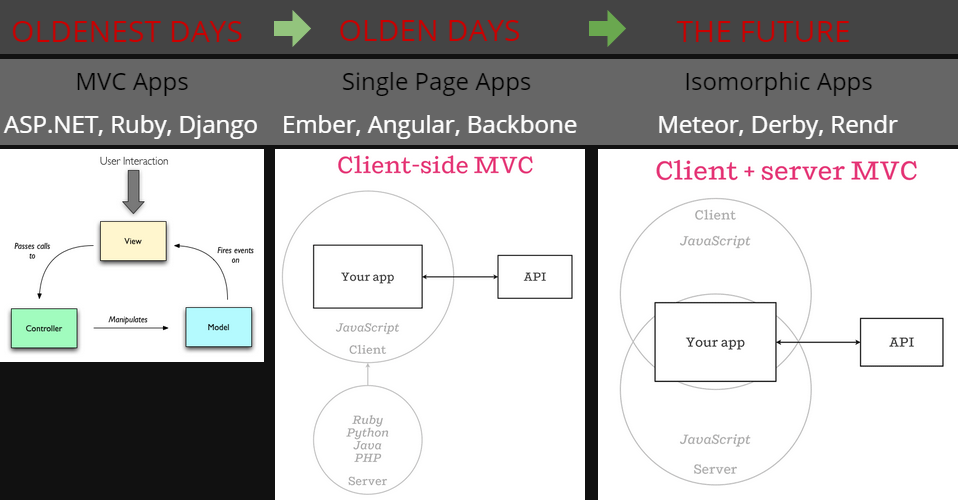The very name isomorphic describes this dual-purposes symmetry: iso means equal and morphous means shape.
The term isomorphic apps and the web development approach behind it were popularized by AirBnb in 2013. The main idea of this is to write a JavaScript application designed for the browser but at the same time; it must run on the server for generating HTML markup, which can dramatically improve the initial load time of such applications and naturally solve the problems associated with optimizing such web applications for search engines.
You may have noticed the trend over the last few years of how traditional server-side MVC applications evolved to client-side apps (aka single-page applications) and then to isomorphic apps:

Note
Check out this great article published by AirBnb developers, which gives a thorough introduction to the isomorphic web application development approach:http://nerds.airbnb.com/isomorphic-javascript-future-web-apps/.
Another essential benefit of isomorphic apps (other than initial page load speed and SEO) is an ability to reduce code duplication by sharing the code between client-side and server-side codebases. Since everything is written in JavaScript, it's easier to build cross-functional teams who know how to work on both client and server sides of the app.
What exactly can be shared between client and server? The presentation layer (UI), routing and navigation, data fetching and persistence, UI localization and internalization.
Is it required to have Node.js on the server in order to run isomorphic apps server side? No, you can execute JavaScript code on any platform, such as PHP, .NET, and Ruby. However, in this book, we're going to use Node.js and Express to keep things simple. Who is using this approach? Flickr, Instagram, Airbnb, and Asana, to name a few.



